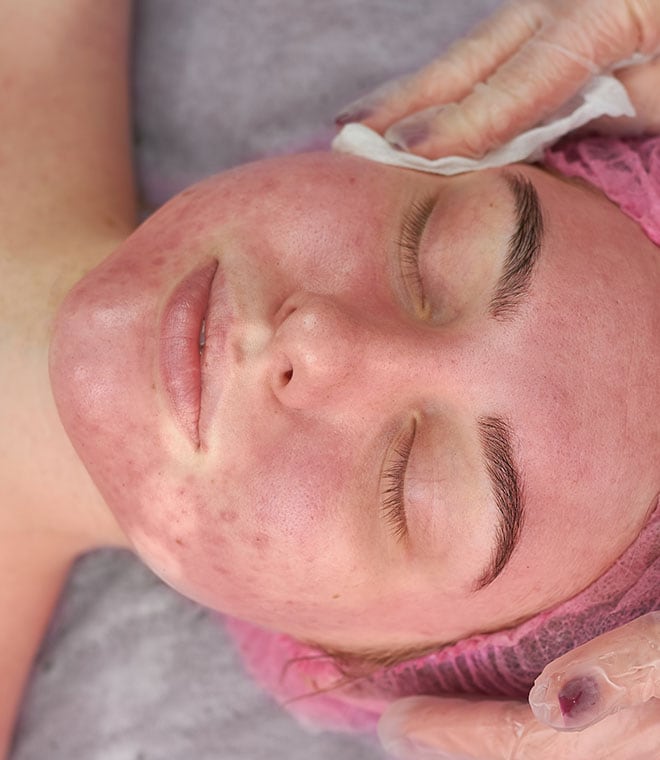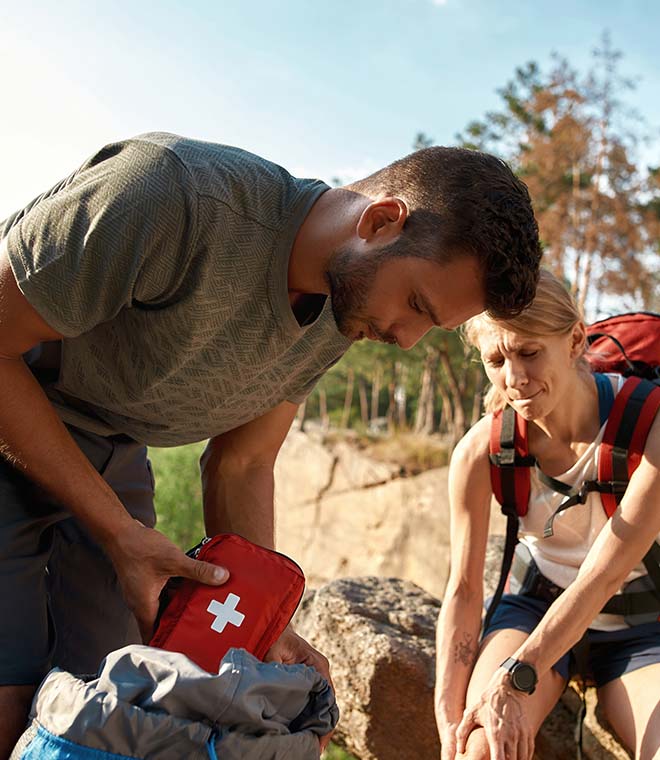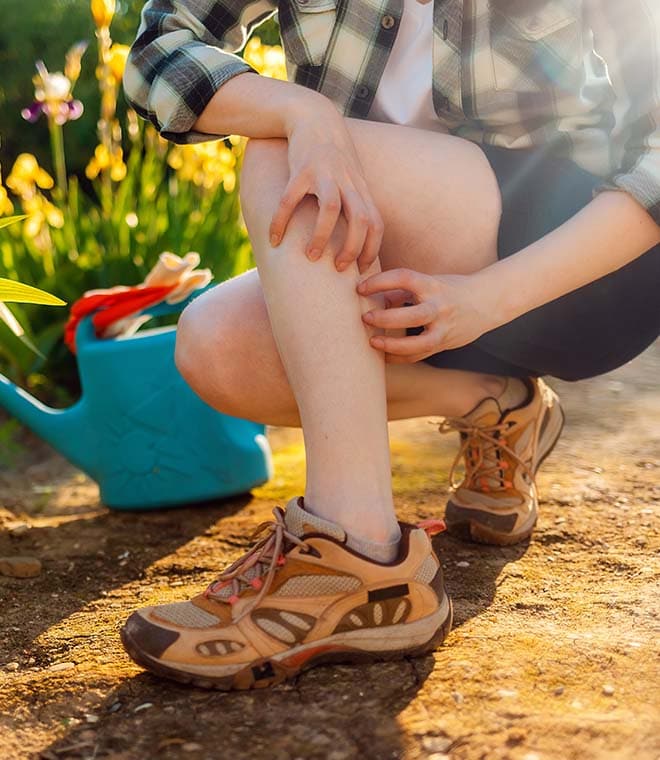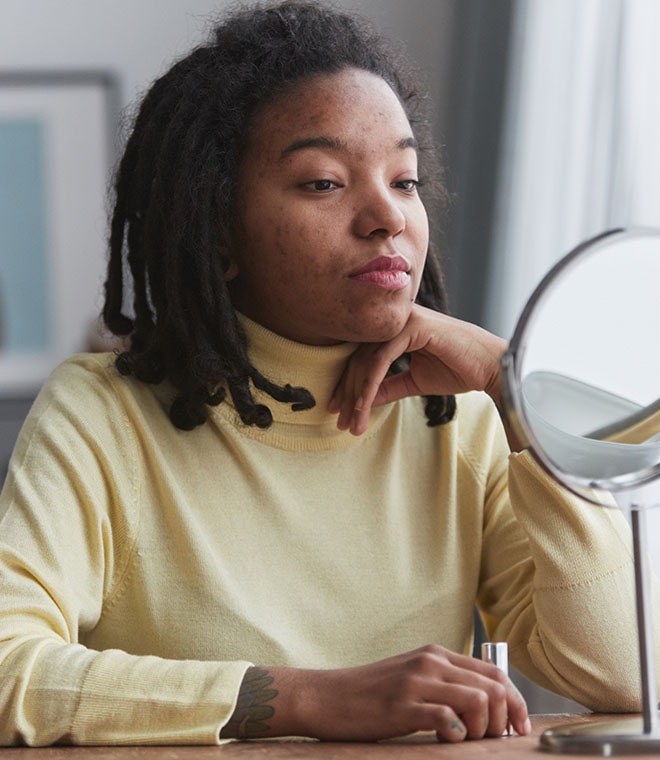Health
What is rosacea?
By Jenilee Matz, MPH Sep 26, 2023 • 8 min
Affecting about 16 million Americans, rosacea is a common skin condition marked by redness on the face. At first, it may only look like flushed cheeks or an outbreak of pimples. But in some cases, rosacea can get worse and cause inflamed, sensitive skin on your cheeks, nose, forehead, chin or eyelids.
What is rosacea?
Rosacea is a long-lasting skin condition that causes red, thick, bumpy and swollen patches of skin on the face. It may look like acne, sunburn or rosy cheeks. The condition can get worse over time, with the inflammation causing sensitivity and discomfort. At this time, there’s no cure for rosacea, but medical treatments and lifestyle changes can help reduce symptoms or prevent symptoms from getting worse.
What causes rosacea?
Rosacea is most common in middle aged and older women, and people with fair skin. While no one knows the exact cause of rosacea, it may be linked with the immune system, and it also seems to run in families. More research is needed to understand exactly what causes rosacea.
Rosacea symptoms and triggers
Rosacea mainly affects the central part of the face, including the cheeks and nose. However, it can also appear on the chin, forehead and eyes. It can even spread to the ears, back and chest. Rosacea symptoms can include:
- Frequent reddening or flushing (blushing) of your face
- Visible, enlarged blood vessels
- Thick skin on your cheeks, forehead or chin
- Acne
- Burning, stinging or dry skin
- Swollen nose or face
- Red, dry, watery, stinging or itchy eyes. You may also have blurred vision or sensitivity to light.
Symptoms vary between people. Rosacea may start with frequent flushing and worsen over time. However, if you have mild rosacea, you may only ever have facial redness without other symptoms.
Rosacea symptoms tend to come and go in cycles. This means that your symptoms may show up for a period of time, go away and then come back again. Many people with rosacea are able to pinpoint specific factors that cause their condition to flare up. Common rosacea triggers include:
- Sunlight
- Temperature extremes
- Psychological stress
- Exercise
- Alcohol
- Hot beverages
- Spicy foods
- Certain medications
- Hot flashes due to menopause
Rosacea types
There are four main rosacea subtypes. It’s possible to have symptoms of more than one subtype at the same time:
- Erythematotelangiectatic rosacea is characterized by redness, flushing and visible blood vessels.
- Papulopustular rosacea causes acne-like breakouts, redness and swelling.
- Phymatous rosacea causes thickened, bumpy skin.
- Ocular rosacea affects the eyes. It may look like you have a sty, your eyelids may be swollen and your eyes may become red and irritated. Your vision may also be impaired.
Rosacea treatment
It’s normal to wonder how to get rid of rosacea. If you have signs of rosacea on the face, see your healthcare provider. Other conditions can look like rosacea, so it’s important to get an accurate diagnosis so you can start treatment. When left untreated, rosacea can get worse. The treatment your provider recommends depends on your symptoms and how you’ve responded to past treatments.
Trigger avoidance
Treatment for rosacea often involves staying away from your triggers. It can be helpful to keep a trigger journal. Write down when you experience flushing or other symptoms, and log any factors you believe may be linked with your symptoms. This can help you and your healthcare provider identify your triggers. For instance, if you find that spicy foods or other foods aggravate your symptoms, don’t eat them. Although there's no one recommended rosacea diet for reducing a flare-up, avoiding the specific foods or drinks that trigger your symptoms can help keep the condition under control.
Gentle skin care
Treatment also often includes following a gentle skin care routine. Your provider may tell you to use a gentle facial cleanser, moisturize your skin often with a rosacea cream and avoid harsh products, such as toners, exfoliators and astringents. Since sunlight may set off rosacea, it can be beneficial to use a broad-spectrum sunscreen of SPF 30 or higher each day. Staying out of the sun during midday hours can also help.
If you want to conceal your rosacea, makeup for rosacea may help. Facial cosmetics such as green-tinted foundation or facial powder can camouflage skin redness and blood vessels.
Medications and laser treatment for rosacea
If avoiding your triggers and following a gentle skin care routine doesn’t improve your rosacea, you may benefit from medical intervention. Your healthcare provider may start treatment with a prescription cream or gel that you apply on your face to help reduce redness or bumps of mild rosacea. Oral antibiotics may be suggested to ease inflammation. In certain cases, a combination of medicines may be needed. For severe cases of rosacea that haven’t improved after treatment with other medicines, isotretinoin, a form of vitamin A, may be considered. This medication decreases the amount of oil in the skin. If you have visible blood vessels or thickening skin from your rosacea, laser or light therapy may also be a part of your treatment plan. Laser or light treatment can reduce redness. To remove thickening skin, laser resurfacing may be used.
Homemade remedies for rosacea
Before you try natural or alternative remedies for rosacea, such as an essential oil for rosacea, talk to your provider. Some products may be too harsh for your skin and end up worsening your rosacea.
If you have facial redness or other signs of rosacea, see your healthcare provider. Together, you can figure out how to treat rosacea and control your symptoms. Finding the best treatment plan may take time, so let your provider know how your rosacea is responding to treatment.
Clinically reviewed and updated September 2023.
Sources:
- https://www.uptodate.com/contents/management-of-rosacea
- https://www.uptodate.com/contents/rosacea-pathogenesis-clinical-features-and-diagnosis
- https://www.aad.org/public/diseases/acne-and-rosacea/rosacea
- https://www.rosacea.org/class/classysystem.php
- https://medlineplus.gov/rosacea.html
- https://newsinhealth.nih.gov/2012/08/red-face
- https://www.rosacea.org/patients/index.php
- https://www.aad.org/public/diseases/acne-and-rosacea/rosacea/lasers-and-lights-how-well-do-they-treat-rosacea



